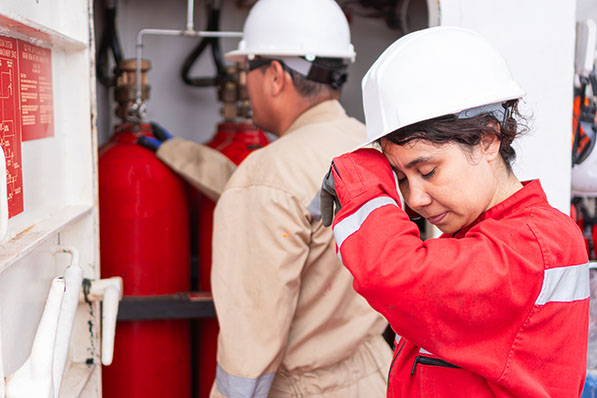In this episode of The Workplace podcast, CalChamber Associate General Counsel Matthew Roberts and Senior Policy Advocate Robert Moutrie discuss the newest developments in California’s indoor heat illness regulations.
With summer around the corner, the impact of warming temperatures on work sites is something employers will soon contend with, Roberts says in introducing the podcast.
In 2016, the California Legislature directed the California Division of Occupational Safety and Health (Cal/OSHA) to develop indoor heat illness standards.
Currently, the agency is crafting revisions in a 15-day change order that was sent out on May 13, including an exemption for state prisons, Moutrie explains. The board is expected to vote on the regulations sometime in June.
Indoor Heat Threshold
The upcoming regulations will affect employers that have a structure/indoor work site in California that gets hotter than 82 degrees.
Generally, office spaces are air conditioned, so the temperature won’t rise above the 82-degree threshold. However, employers should pay attention to spaces such as buildings, sheds, kitchens and other areas that are not air conditioned, Roberts says.
Employer Requirements
Similar to outdoor heat regulations, the new indoor heat regulations require employers to provide cool drinking water, create an area where an employee can cool down and give employees cooldown breaks. In addition, the regulation requires someone to monitor employees while they’re taking a cooldown break.
Employers also will need to offer training, maintain temperature records and record heat index temperatures frequently, Moutrie says.
Moreover, taking the temperature of a room is different than gauging its heat index, which measures other factors such as humidity. This means that employers will need to purchase a more advanced tool than a thermometer to record the temperature of an indoor space.
Another variable employers should be on the lookout for is “restrictive clothing.”
“If you’re in a place, you’re in a foundry, you’re in some other space where you’re wearing heavier safety equipment that prevents heat from leaving, those workplaces are going to have lower temperature thresholds, because Cal/OSHA is trying to account for the weight of those clothes,” Moutrie says.
Storage Sheds
The indoor heat illness regulations include an exemption for storage sheds and other outdoor spaces used to store things. However, if the storage space briefly gets above 95 degrees and an employee briefly steps into it, then the indoor heat rules are triggered, and the employer must comply with the regulation, Moutrie explains.
Anticipated Rollout
The regulations will likely pass in June. Once they pass, the rules will go to the California Office of Administrative Law (OAL), where they will be reviewed. While the review period typically takes weeks, the OAL has been asked to expedite the review.
Employers may see the regulations take effect as early as the first half of July, Moutrie says.
How Employers Can Prepare
Moutrie encourages businesses that can afford an attorney to consult with legal counsel on how best to prepare for these new regulations. An attorney can analyze a particular business and give feedback on how to properly record temperatures, how to implement engineering controls to lower temperatures in the work space and locate cooldown areas.
The cooldown space requirement is an issue that was discussed a lot during the rulemaking process as some small businesses don’t have complete control of their premises, Moutrie says.
For example, a restaurant that rents space in a building may have space for a kitchen and space for customers outside, but it may not have a spare room that could be used as a cooldown space. The CalChamber, he says, worked hard to negotiate with Cal/OSHA to make sure there was an option of creating a cooldown space outside.
So, if you’re an employer with limited space, it’s important to start thinking about these requirements now, Moutrie stresses.

